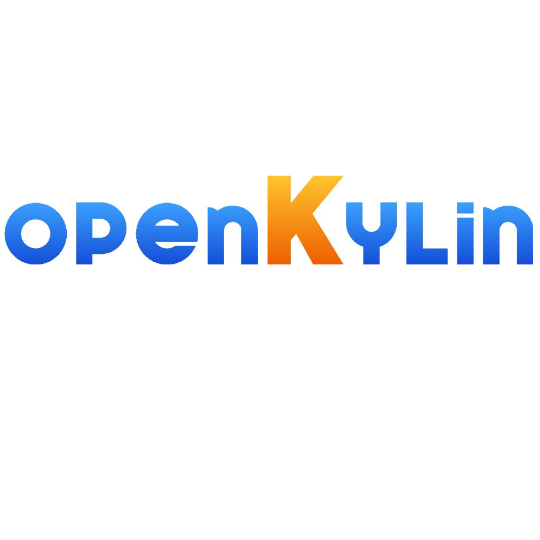使用Solo.io Gloo Gateway集成Auth0实现OIDC身份认证
2025-06-12 09:46:37作者:虞亚竹Luna
概述
在现代微服务架构中,API网关作为系统入口,身份认证和授权是必不可少的安全功能。本文将详细介绍如何使用Solo.io的Gloo Gateway与Auth0身份提供商集成,实现基于OIDC(OpenID Connect)的身份认证流程。
准备工作
部署测试服务
首先我们需要在Kubernetes集群上部署一个简单的测试服务。这里我们选择httpbin作为演示应用:
kubectl apply -f https://raw.githubusercontent.com/istio/istio/master/samples/httpbin/httpbin.yaml
Gloo Gateway会自动发现Kubernetes服务,创建对应的Upstream。可以通过以下命令验证:
glooctl get upstreams default-httpbin-8000
创建虚拟服务
接下来创建VirtualService将流量路由到httpbin服务:
apiVersion: gateway.solo.io/v1
kind: VirtualService
metadata:
name: httpbin-auth0-vs
namespace: gloo-system
spec:
virtualHost:
domains:
- 'glootest.com'
routes:
- matchers:
- prefix: /
routeAction:
single:
upstream:
name: default-httpbin-8000
namespace: gloo-system
配置HTTPS访问
为了安全考虑,我们为服务配置HTTPS访问:
- 生成自签名证书:
openssl req -x509 -nodes -days 365 -newkey rsa:2048 -keyout tls.key -out tls.crt -subj "/CN=glootest.com"
- 创建Kubernetes Secret:
kubectl create secret tls upstream-tls --key tls.key --cert tls.crt --namespace gloo-system
- 更新VirtualService启用HTTPS:
spec:
sslConfig:
secretRef:
name: upstream-tls
namespace: gloo-system
集成Auth0身份认证
配置Auth0应用
- 在Auth0管理控制台创建新应用,选择"Regular Web Application"类型
- 配置允许的回调URL为
https://glootest.com/callback - 记录应用的Client ID和Client Secret
配置Gloo Gateway认证
- 创建OAuth Secret:
glooctl create secret oauth --namespace gloo-system --name auth0-client-secret --client-secret $CLIENT_SECRET
- 创建AuthConfig资源:
apiVersion: enterprise.gloo.solo.io/v1
kind: AuthConfig
metadata:
name: auth0-ac
namespace: gloo-system
spec:
configs:
- oauth2:
oidcAuthorizationCode:
appUrl: https://glootest.com
callbackPath: /callback
clientId: <your-client-id>
clientSecretRef:
name: auth0-client-secret
namespace: gloo-system
issuerUrl: <your-auth0-domain>
scopes:
- email
- 更新VirtualService引用AuthConfig:
options:
extauth:
configRef:
name: auth0-ac
namespace: gloo-system
调整认证超时
由于需要与外部Auth0服务交互,建议适当增加认证超时时间:
spec:
extauth:
requestTimeout: 1s
JWT令牌处理
提取JWT令牌
我们可以从Auth0返回的Cookie中提取JWT令牌,并转换为请求头:
options:
stagedTransformations:
early:
requestTransforms:
- requestTransformation:
transformationTemplate:
extractors:
token:
header: 'cookie'
regex: '.*id_token=([^;]*).*'
subgroup: 1
headers:
jwt:
text: '{{ token }}'
headerManipulation:
requestHeadersToRemove:
- "cookie"
使用JWKS验证JWT
Auth0提供了JWKS端点用于验证JWT令牌。我们可以配置Gloo Gateway使用这个端点:
- 创建指向Auth0 JWKS端点的Upstream:
apiVersion: gloo.solo.io/v1
kind: Upstream
metadata:
name: auth0-jwks
namespace: gloo-system
spec:
static:
hosts:
- addr: <your-auth0-domain>
port: 443
- 配置JWT验证和声明提取:
options:
jwt:
providers:
auth0:
issuer: <your-auth0-domain>
jwks:
remote:
upstreamRef:
name: auth0-jwks
namespace: gloo-system
url: "/.well-known/jwks.json"
claimsToHeaders:
- claim: email
header: X-User-Email
基于角色的访问控制(RBAC)
利用从JWT中提取的声明,我们可以实现细粒度的访问控制:
options:
rbac:
policies:
viewer:
permissions:
methods: ["GET"]
principals:
- jwtPrincipal:
claims:
email: "user@example.com"
总结
通过本文的步骤,我们实现了:
- 在Gloo Gateway中部署httpbin测试服务
- 配置HTTPS安全访问
- 集成Auth0作为OIDC身份提供商
- 处理JWT令牌并提取用户声明
- 基于用户声明实现细粒度访问控制
这种集成方式为企业应用提供了强大的身份认证和安全控制能力,同时保持了架构的灵活性和可扩展性。
登录后查看全文
热门项目推荐
 kernelopenEuler内核是openEuler操作系统的核心,既是系统性能与稳定性的基石,也是连接处理器、设备与服务的桥梁。C042
kernelopenEuler内核是openEuler操作系统的核心,既是系统性能与稳定性的基石,也是连接处理器、设备与服务的桥梁。C042 MiniMax-M2.1从多语言软件开发自动化到复杂多步骤办公流程执行,MiniMax-M2.1 助力开发者构建下一代自主应用——全程保持完全透明、可控且易于获取。Python00
MiniMax-M2.1从多语言软件开发自动化到复杂多步骤办公流程执行,MiniMax-M2.1 助力开发者构建下一代自主应用——全程保持完全透明、可控且易于获取。Python00 kylin-wayland-compositorkylin-wayland-compositor或kylin-wlcom(以下简称kywc)是一个基于wlroots编写的wayland合成器。 目前积极开发中,并作为默认显示服务器随openKylin系统发布。 该项目使用开源协议GPL-1.0-or-later,项目中来源于其他开源项目的文件或代码片段遵守原开源协议要求。C01
kylin-wayland-compositorkylin-wayland-compositor或kylin-wlcom(以下简称kywc)是一个基于wlroots编写的wayland合成器。 目前积极开发中,并作为默认显示服务器随openKylin系统发布。 该项目使用开源协议GPL-1.0-or-later,项目中来源于其他开源项目的文件或代码片段遵守原开源协议要求。C01 PaddleOCR-VLPaddleOCR-VL 是一款顶尖且资源高效的文档解析专用模型。其核心组件为 PaddleOCR-VL-0.9B,这是一款精简却功能强大的视觉语言模型(VLM)。该模型融合了 NaViT 风格的动态分辨率视觉编码器与 ERNIE-4.5-0.3B 语言模型,可实现精准的元素识别。Python00
PaddleOCR-VLPaddleOCR-VL 是一款顶尖且资源高效的文档解析专用模型。其核心组件为 PaddleOCR-VL-0.9B,这是一款精简却功能强大的视觉语言模型(VLM)。该模型融合了 NaViT 风格的动态分辨率视觉编码器与 ERNIE-4.5-0.3B 语言模型,可实现精准的元素识别。Python00 GLM-4.7GLM-4.7上线并开源。新版本面向Coding场景强化了编码能力、长程任务规划与工具协同,并在多项主流公开基准测试中取得开源模型中的领先表现。 目前,GLM-4.7已通过BigModel.cn提供API,并在z.ai全栈开发模式中上线Skills模块,支持多模态任务的统一规划与协作。Jinja00
GLM-4.7GLM-4.7上线并开源。新版本面向Coding场景强化了编码能力、长程任务规划与工具协同,并在多项主流公开基准测试中取得开源模型中的领先表现。 目前,GLM-4.7已通过BigModel.cn提供API,并在z.ai全栈开发模式中上线Skills模块,支持多模态任务的统一规划与协作。Jinja00 agent-studioopenJiuwen agent-studio提供零码、低码可视化开发和工作流编排,模型、知识库、插件等各资源管理能力TSX0121
agent-studioopenJiuwen agent-studio提供零码、低码可视化开发和工作流编排,模型、知识库、插件等各资源管理能力TSX0121 Spark-Formalizer-X1-7BSpark-Formalizer 是由科大讯飞团队开发的专用大型语言模型,专注于数学自动形式化任务。该模型擅长将自然语言数学问题转化为精确的 Lean4 形式化语句,在形式化语句生成方面达到了业界领先水平。Python00
Spark-Formalizer-X1-7BSpark-Formalizer 是由科大讯飞团队开发的专用大型语言模型,专注于数学自动形式化任务。该模型擅长将自然语言数学问题转化为精确的 Lean4 形式化语句,在形式化语句生成方面达到了业界领先水平。Python00
项目优选
收起
deepin linux kernel
C
26
10
OpenHarmony documentation | OpenHarmony开发者文档
Dockerfile
435
3.3 K
Ascend Extension for PyTorch
Python
241
277
Nop Platform 2.0是基于可逆计算理论实现的采用面向语言编程范式的新一代低代码开发平台,包含基于全新原理从零开始研发的GraphQL引擎、ORM引擎、工作流引擎、报表引擎、规则引擎、批处理引引擎等完整设计。nop-entropy是它的后端部分,采用java语言实现,可选择集成Spring框架或者Quarkus框架。中小企业可以免费商用
Java
9
1
本项目是CANN提供的数学类基础计算算子库,实现网络在NPU上加速计算。
C++
694
367
仓颉编译器源码及 cjdb 调试工具。
C++
138
869
🔥LeetCode solutions in any programming language | 多种编程语言实现 LeetCode、《剑指 Offer(第 2 版)》、《程序员面试金典(第 6 版)》题解
Java
65
19
暂无简介
Dart
696
163
React Native鸿蒙化仓库
JavaScript
270
328
仓颉编程语言运行时与标准库。
Cangjie
145
881